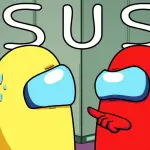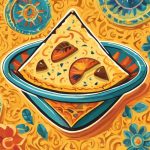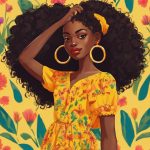Introduction: Decoding Chav British Slang
Welcome to the vibrant world of Chav British Slang! Have you ever heard someone use phrases like “bare peng” or “innit, bruv”? If you’re curious about the language that has swept through British urban communities and pop culture, you’ve come to the right place. In this comprehensive guide, we’ll dive deep into decoding Chav British Slang, exploring its history, key characteristics, popular terms and phrases, impact on contemporary language, and even dispel some misconceptions surrounding this unique subculture.
Picture yourself walking down a bustling street in a vibrant city. The air is filled with excitement as conversations buzz around you. Suddenly, amidst the sea of diverse accents and expressions, your ears catch snippets of an unfamiliar dialect – Chav British Slang. It’s a linguistic tapestry that weaves together elements of regional accents, youth culture influences, and street vernacular to create a distinctive form of communication.
But how did Chav British Slang come into existence? To truly understand its essence today requires us to take a journey back in time. We’ll explore the fascinating history and evolution of chav culture – from its roots in working-class communities to its emergence as a powerful force within contemporary slang.
As we delve deeper into decoding Chav British Slang together, we’ll uncover its defining characteristics that set it apart from other forms of urban vernacular. From playful wordplay to expressive gestures and intonations – every aspect contributes to creating an authentic linguistic experience.
Ready for some behind-the-scenes insights? We’ll peer into the vocabulary treasure trove packed with popular terms and phrases commonly used by those who embrace Chav British Slang as part of their identity. From familiar greetings like “Safe” or “Chillin'” to more specific slang expressions like “Blud” or “Zoot” – each term adds layers of color and nuance to everyday conversations.
Beyond being just words casually tossed around, Chav British Slang extends its influence far beyond just young urban communities. With a strong presence in music, entertainment, and even online platforms, this vibrant language has left an indelible mark on contemporary discourse.
But amidst the popularity and influence, misconceptions and stereotypes often emerge. Join us as we debunk some of the common myths surrounding Chav culture – shedding light on the diverse individuals who navigate their way through life with this unique linguistic lens.
By the end of this journey into decoding Chav British Slang, we hope you embrace the beauty of diversity within modern slang. Let’s explore its intricacies together and celebrate the tapestry that makes up our rich cultural fabric. Get ready to immerse yourself in a world where every phrase has a story to tell!
History and Evolution of Chav Culture
The history and evolution of Chav culture is a fascinating tapestry that intertwines with the social fabric of British society. Rooted in the working-class communities of the late 20th century, Chav culture emerged as a response to economic and social conditions, ultimately shaping its unique language and fashion.
In the late 90s and early 2000s, there was a significant shift in British society. The rise of consumerism, coupled with a widening wealth gap, gave birth to the emergence of Chav culture. This subculture became synonymous with exaggerated expressions of wealth through flashy designer brands, ostentatious accessories like oversized gold jewelry, and an audacious sense of style.
Chav culture drew inspiration from various sources such as hip-hop fashion trends and popularized sportswear brands like Adidas or Burberry. However, what set it apart was not just the clothing but also its symbolic meaning – representing rebellion against traditional societal norms imposed by mainstream institutions.
While initially considered derogatory by some, Chavs embraced their cultural identity proudly. They found solace in community bonds formed out of shared experiences and struggles within marginalized areas across Britain. The term “Chav” itself gradually transformed from being an insult to serving as a symbol for resilience and defiance against societal expectations.
The language used by Chavs played an integral role in shaping their identity. From distinct dialects heavily influenced by regional accents to unique slang terms that reflected their everyday experiences – every word became part of their rebellious linguistic landscape.
As time passed, mainstream media attention mixed both negative portrayals perpetuating stereotypes while simultaneously bringing recognition to this subculture’s influence on contemporary British life. The perception shifted from being solely associated with negativity towards recognizing its contribution to urban fashion trends or even linguistic innovations that entered popular usage.
Exploring the history and evolution of Chav culture provides us insight into not just specific fashion choices or language tendencies but also highlights broader patterns within our society. It reminds us of the power of cultural identity and its ability to shape narratives, challenge societal norms, and celebrate individuality.
Characteristics of Chav British Slang
Characteristics of chav british slangilluminate the distinct traits that set it apart as a vibrant and expressive form of urban language. Rooted in working-class communities and influenced by diverse accents, this unique slang reflects the experiences and identities of those who embrace it.
Chav British Slang is characterized by its playful wordplay, inventive vocabulary, and distinct intonation. It incorporates a mix of regional dialects from various parts of Britain, resulting in diverse linguistic flavors within Chav communities.
One defining characteristic is the use of creative word formation. Chavs often create new words or modify existing ones to convey specific meanings. This linguistic innovation adds an element of freshness and individuality to their conversations.
Additionally, Chav British Slang places emphasis on slang terms that are exclusive to their subculture. From familiar expressions like “innit” (short for “isn’t it”) used for agreement or affirmation to distinctive phrases like “bruv” (short for “brother”) used as a term of endearment among friends – each term adds depth and color to their interactions.
The intonation patterns employed by Chavs play an essential role in communication. Rising inflections at the end of sentences give them a distinctive cadence, enhancing expressiveness and reinforcing social bonds within their community.
The authenticity found within Chav British Slang lies not only in its vocabulary but also in its ability to reflect shared experiences, cultural heritage, and identity formation. By embracing these characteristics, individuals who identify with this subculture forge strong connections while simultaneously challenging traditional language norms.
Through its dynamic nature and ongoing evolution along with societal shifts, this vibrant form of expression continues to evolve day by day while leaving an indelible mark on contemporary cultural landscapes across Britain.
Popular Chav British Slang Terms and Phrases
Popular chav british slang terms and phrasesshowcase the vibrancy and richness of this urban vernacular. From greetings to expressions of agreement or excitement, these colloquialisms add a unique flavor to conversations within the Chav community.
One can’t help but be captivated by the distinct lexicon that defines Chav British Slang. Familiarize yourself with some popular terms and phrases commonly used:
1. “Safe” – An informal greeting or affirmation, often used in place of “hello” or “alright”.
2. “Mad Ting” – A phrase indicating something is crazy, exciting, or over-the-top.
3. “Crep” – Slang for shoes or sneakers: a term you’ll frequently hear within sneakerhead circles.
4. “Peng/Gwop” – Both words refer to money and are used interchangeably among Chavs.
5. “‘Sick’ One/Wheelie/Pengting/Estate:” Each term represents something exceptional, cool, attractive, or simply impressive.
While this is just a glimpse into the vast vocabulary of Chav British Slang, these popular terms reflect the creativity, dynamism, and subtle nuances embedded within this form of communication.
Incorporating these slang terms into everyday conversations fosters a sense of camaraderie amongst those well-versed in Chav culture while maintaining that distinctive linguistic identity closely associated with urban communities in Britain.
So if you find yourself immersed in a lively conversation peppered with phrases like “bare peng,” signaling extreme attractiveness or admiration; or using expressions like “‘ave it,” emphasizing assertiveness and enthusiasm – you’re experiencing firsthand the rich tapestry woven by popular Chav British Slang terms and phrases!
The Impact of Chav British Slang on Contemporary Language
The impact of chav british slang on contemporary languageis undeniable, as it has permeated various aspects of modern communication and become an influential force in shaping the cultural landscape.
Chav British Slang has made a significant imprint on contemporary language, extending beyond the boundaries of its origin. Its vibrant expressions and distinctive lexicon have found their way into mainstream platforms, such as music, social media, and even advertising campaigns.
The influence of Chav slang can be seen in popular music genres like grime and UK rap, where artists incorporate these colloquialisms into their lyrics. This infusion adds authenticity and local flavor to the music while connecting listeners with the rich cultural diversity embodied by Chavs.
Moreover, Chav British Slang has seeped into everyday online conversations. Social media platforms are teeming with hashtags incorporating Chavs’ unique vocabulary. From casual interactions to memes or viral trends circulating online – this linguistic treasure trove finds its place in internet culture.
Contemporary advertising campaigns have also harnessed the power of Chav British Slang to connect with target audiences. Brands understand that using these terms can evoke a sense of relatability among young consumers while showcasing an understanding of urban culture.
While some initial misperceptions may have stigmatized Chav culture as negative or derogatory, society has come to appreciate its impact on contemporary language as part of our ever-evolving linguistic landscape. It serves as a reminder that language is fluid and constantly shaped by the diverse experiences and communities within society.
In conclusion, the influence of Chav British Slang extends far beyond its origins. It resonates across musical genres, social media platforms, and even marketing strategies – breathing life into contemporary language through its vibrant expressions and capturing the essence of modern urban vernacular.
Misconceptions and Stereotypes Surrounding Chav Culture
Clearing the fog of misconceptions and stereotypes surrounding Chav culture is essential in understanding this vibrant subculture. By challenging preconceived notions, we can unravel the complexity of this community and embrace the diversity that it represents.
Misconceptions about Chav culture often stem from negative media portrayals that perpetuate stereotypes. While media tends to focus on exaggerated representations of fashion choices or language quirks, it fails to capture the true essence of this subculture – a diverse group with various backgrounds, aspirations, and experiences.
One common misconception is associating Chavs solely with low socio-economic status or criminal behavior. In reality, individuals who identify as Chavs belong to a wide range of socio-economic backgrounds and occupations. They defy simplistic categorizations or assumptions based on appearances alone.
Another misconception is assuming that Chav British Slang signifies lack of education or intellectual capability. However, these linguistic expressions symbolize cultural identity rather than intelligence levels. The creativity and adaptability found within their vocabulary showcase linguistic innovation rather than limitations.
It’s important to note that casting judgment based on superficial impressions overlooks the rich complexities within Chav culture. By challenging misconceptions and embracing diversity in all its forms, we can foster an inclusive society rooted in understanding and appreciation for different cultural expressions.
Let us move beyond ill-informed stereotypes and take a closer look at what lies beneath through honest exploration and open dialogue; only then can we appreciate the individuality, resilience, and contributions embedded within Chav culture.
Conclusion: Embracing Diversity in Modern Slang
In conclusion, embracing diversity in modern slang is crucial for fostering understanding and appreciation of the vibrant tapestry of expressions that exist within our society. Chav British Slang, with its rich history, unique characteristics, and popular terms, offers a glimpse into the cultural diversity that thrives within urban communities.
By decoding Chav British Slang and exploring its impact on contemporary language, we dispel misconceptions and stereotypes that often overshadow the true essence of this subculture. It becomes evident that Chav culture is not merely defined by fashion choices or linguistic quirks but represents a multifaceted community with its own narratives, experiences, and aspirations.
Through our journey into Chav British Slang’s history, characteristics, popular terms and phrases, as well as its influence on modern communication, we gain insight into not just one specific subculture but also wider patterns within language evolution and cultural dynamics.
As we navigate an increasingly interconnected world filled with diverse voices and perspectives, embracing diversity in modern slang opens doors to cross-cultural understanding. It broadens our horizons by inviting us to explore different ways of expressing ourselves while honoring the authenticity woven into each linguistic fabric.
So let’s celebrate the richness of urban vernaculars like Chav British Slang by engaging in open-minded conversations. By appreciating these distinct forms of expression rather than succumbing to stereotypes or judgments based on outward appearances alone.
Remember: Language is constantly evolving – a reflection of our ever-changing societal landscapes – it unites us as humans while celebrating our individuality. So embrace diversity in modern slang with curiosity and respect!
Are there other fascinating subcultures or types of speech you’d like to learn about? Let us know in the comments below! Keep exploring languages’ colorful tapestry together!









